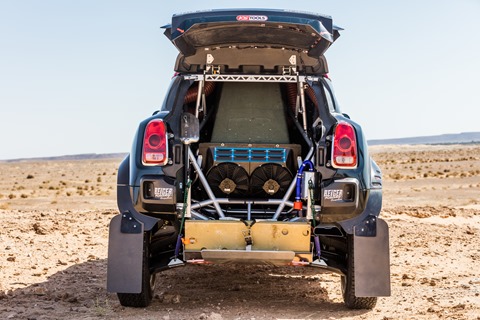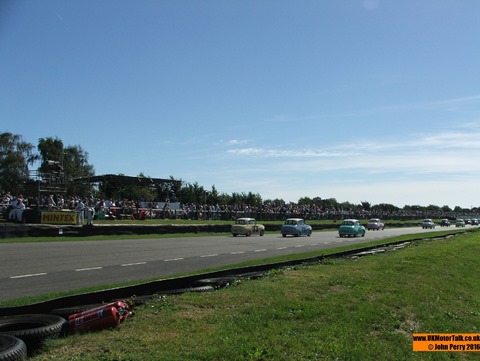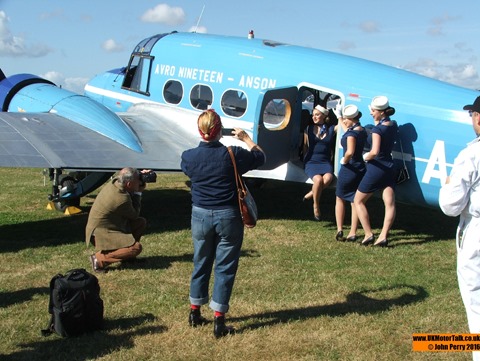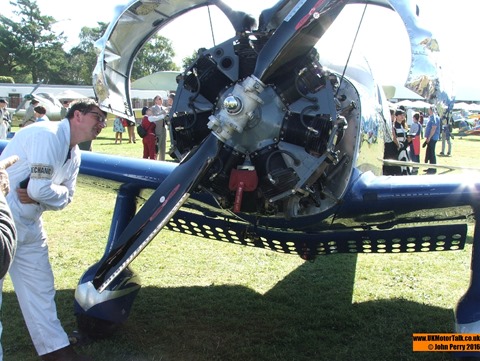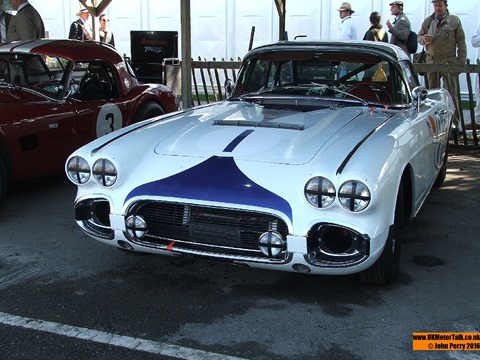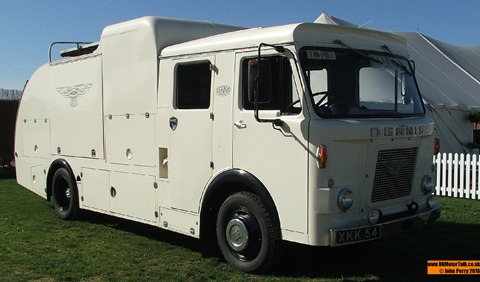It was as I heaved open the vault-like door of a friend’s latest acquisition at the weekend I paused to appreciate the lengths to which car manufacturers will now go in order to ease the burden of the automotive traveller.
My mate had - with some caution it must be said – manoeuvred the not-unsubstantial 2014 Range Rover Autobiography down our narrow driveway and it was as I reached out to the passenger door handle in order to open it and greet him that my attention was diverted from the grinning fizzog of the car’s evidently proud pilot by the sight of a mechanised running board/step arrangement gliding smoothly from the lower sill in the general direction of my shins.
Emblazoned with a ‘Range Rover’ logo I gawped at it as I realised that this latest 4-wheeled automotive marvel to which my chum had treated himself was in another league again from the already well-appointed old-shape item he’d recently chopped in.
Much as one might once have marvelled at the now increasingly de-rigeur hands-free flush in public lavs, I found myself opening and closing the (soft-close, natch) door in order to watch this mechanical ballet play out over and over whilst in my mind the question of how I had existed for so long without access to such a remarkable feature on my own personal transport nagged away at my addled braincell..
Labour-saving features on cars have of course traditionally appeared at the higher end of the market before filtering down to those of us mere mortals and functions once considered to be the province of the luxury boys such as electric windows and climate control are now pretty much standard fitment on the majority of vehicles in the UK's showrooms.
So, in order to go at least some way towards justifying the inflated prices demanded of those who would travel in the cosseted world of the opulent, manufacturers are continually striving to alleviate the apparently onerous tasks presented by the action of piloting - or indeed being piloted in - their vehicles.
On the face of it, the Range Rover's robotic aid to ingress/egress might seem an exercise in overkill and complexity - a practical demonstration of the perceived laziness commensurate with the sort of coddled target market to which the brand is pitched - but it does illustrate the point that in order to attract & retain the custom of those for whom the outlay of a six figure sum on transport is a familiar decision - the high-end manufacturer is compelled to keep pulling ever more ingenious labour saving functions out of their corporate hat.
In the case of the Range Rover, just opening the door and being offered an easy way of embarking or disembarking is the rather elegant first step - literally - towards being conveyed in comfort which only a few years ago would have been the preserve of those used to travelling behind a fluted grille and a shiny bonnet mascot.
Such is the gamut of luxurious gewgaws and luxury touches that one can waft along in a wonderful bubble of isolation - cushioned against the hectic pace of life outside by double glazed windows and constantly adapting air suspension as one's buttocks and lumbar regions are warmed/cooled/kneaded by expansive leather seats adjustable in every conceivable axis so that the lucky occupant experiences nothing so troubling as a stiff sacrum or a chilly bum cheek..
And these features certainly have a place - anyone shelling out the previously mentioned £100k plus for the privilege of travelling Business Class on the nation's increasingly crowded and stress-inducing road network can rightly expect a lot of luxury for the outlay - but at what point do the labour-saving accoutrements start to become distractions or conversely so indispensable that we neglect our duty to scan the road ahead because the radar nestling in the front bumper is doing it for us?
For the driver, aren't these ever-present comfort features in danger of diverting him or her from the actual purpose of being in the vehicle in the first place?
And are we, as those charged with safely piloting machines with the capacity to kill, not at risk of allowing ourselves to rely too much on the driver aid technology at our disposal - whether it be the blind spot detector the or the radar-controlled cruise control - at the expense of actually
driving the car using our inbuilt sense of hazard perception and spatial awareness?
Indeed, it seems that the lines between what constitutes a comfort feature and a driver aid are becoming increasingly blurred & not just in the rarified, climate-controlled confines of the latest Range Rover either. As more and more functions previously only available to those with a penchant for the posh start to trickle down to mid-range, mass-market fleet metal, we're starting to be presented with a bewildering array of technology each time we climb behind the (increasingly optionally-heated) wheel.
This might well be a bit of a double-edged sword, not least for the reasons alluded to above: more distraction + more reliance on the technology could very well add up to a loss of focus on the actual act of driving with the inherent disastrous consequences.
We certainly live in interesting times - technology is advancing at such a rate that we can only be but a couple of years & some diligently-applied legislation away from encountering fully autonomous vehicles on our roads, despite the recent well-publicised and tragic death of a US Tesla driver at the wheel of a car in "Autopilot" mode.
But the fact remains that for the foreseeable future the vast majority of cars on our roads will be being conducted not just by a battery of computers fed by a multitude of sensors but by flesh and blood utilising the Mk1 eyeball and the grey matter number-crunching engine between our ears, and for that reason I believe that whilst the onward march of technology definitely has a part to play in helping us get from A to B with minimum fuss and in the safest way possible it shouldn't become so overbearing that it reduces the onus on the driver to use his or her own judgement & most certainly shouldn't affect their ability to maintain control of his vehicle at all times.
Now, don't get me wrong - not one of us here at UKMotortalk could be classed as a Luddite - we're not going to berate the march of technology and with open arms we welcome anything which advances the cause of safety for the road user and in particular that which eases the burden on today's hard-pressed car driver.
But equally we would strongly advocate that those who find this technology increasingly at their disposal recognise when it is a hindrance rather than a help.
Whether it comes in the form of a vast TFT infotainment screen in the middle of the dashboard (*cough*
Tesla *cough*) or a trick self-parking mode, applied science in the cockpit should surely be as unobtrusive as possible - particularly in the case of gadgetry and switchgear.
We as drivers in our turn should perhaps be encouraged to accept the increasing assistance with which the motor manufacturers are so keen to provide us but not at the cost of distracting ourselves from the art of driving or the risk of dulling our own skills.
Mind how you go..
Dave Wakefield


